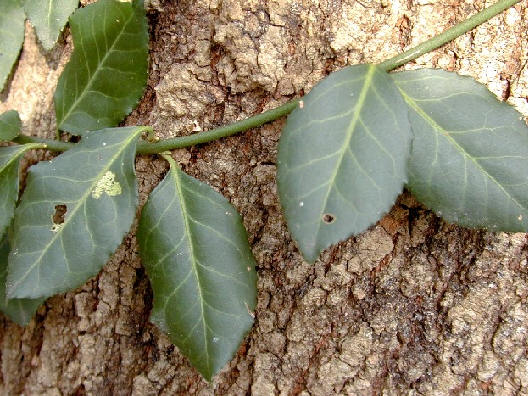| Euonymus fortunei | |
|
Wintercreeper
|
|
| Origin Of Species | |
| China | |
| Physical Description | |
| Wintercreeper is an evergreen vine that can climb up to seventy feet in height or form a dense groundcover. Its dark green toothed elliptical leaves are opposite along the stem and may reach two inches in length. Small cream flowers occur in clusters on a long stalk that originates within the axils of leaves in the summer between June and July. Red seed capsules split to reveal orange arils in the fall. | |
| Habitat And Distribution | |
| Wintercreeper is found along and within forests throughout the United States. | |
| Location On Campus | |
| Wintercreeper is cultivated as a groundcover on the bank directly south of Gottwald Science Center (along Westhampton Way). Small, apparently spontaneous colonies occur at the edge of the woods near the Westhampton Gate and near the entrance to the parking lot below Tyler Haynes Commons. A major infestation occurs at the Huguenot Woods unit of James River Park not far from campus. | |
| Negative Impacts | |
| Wintercreeper is often planted as an ornamental, but can become an ecological threat because of its ability to grow rapidly and tolerate a diverse range of conditions. Wintercreeper displaces native vegetation by quickly forming a dense cover either in the canopy or on the floor of a forest where it monopolizes essential resources. | |
| VDCR Invasiveness Ranking | |
| Moderately Invasive Species Additional Images: Vine on tree Leaves and stem Vines on tree |
|
